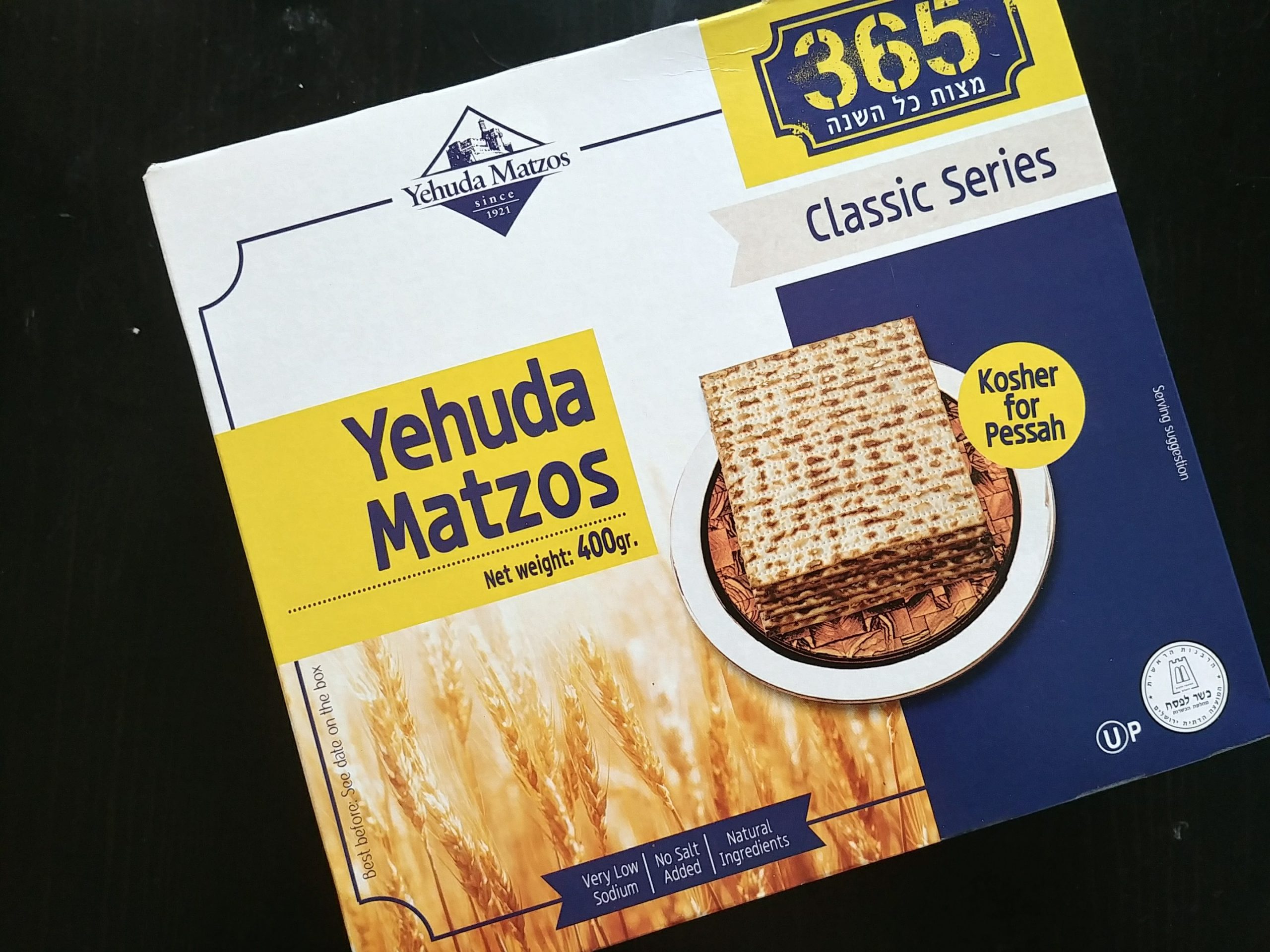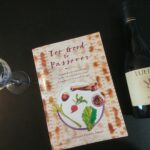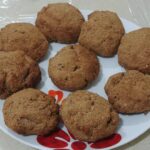Of all of the Jewish holidays, Passover or Pesach (its Hebrew name) is the one most tied to food. For starters, it is the only one with a specific Biblical commandment to eat something (matzah), as well as one to avoid an entire other class of foods (chametz — leavened dough). And although we no longer sacrifice the Paschal Lamb, since the destruction of the Temple, we were also commanded in the Torah to eat that, along with matzah and maror (bitter herbs) on the first night of the holiday.
Other holidays such as Purim have Rabbinic food-related commandments (sending food gifts and eating a feast). And still others (such as Rosh Hashana, Chanukkah and Shavuot) have myriad customary foods eaten on them. But Pesach remains unique on the Jewish calendar, in this aspect. It may be the perfect example of the old joke that describes the meaning of every Jewish holiday: “They tried to kill us, we won, let’s eat!”
Furthermore, the highlight of our Pesach celebration is a highly ritualized meal, complete with a host of other food-related customs. A plate covered in symbolic foods, the fruit-and-nut based condiment known as charoset, four cups of wine, etc. And a number of those foods present the interesting duality of simultaneously symbolizing both the suffering we experienced during Egyptian slavery and the elation of our freedom following the Exodus. Matzah, for example, symbolizes the bread baked in haste as we took our first breaths of freedom following Egyptian slavery, while also being referred to as the “bread of our affliction.”
Finally, since food is one thing that we can enjoy (almost) equally alone and with others, it may be the best aspect of this holiday to focus on when so many of us will be celebrating the holiday this year by ourselves or with many fewer people around us. So I feel it is an appropriate time for me to launch this blog, sharing with you insights I’ve gained about Jewish Food and its connections to Jewish cultural history.
So here are a few of the interesting Pesach food facts I’ve come across.
Charoset
I’ll start with charoset, that uniquely Jewish food. Like our Shabbat Stews (on that food, there will be plenty of posts in the future), Jewish communities around the world prepare versions of it that are simultaneously varied and yet strangely unified. Typically they are brown-to-red in color, and typically mix fruits, nuts and spices.
Spice & Kosher: Exotic Cuisine of the Cochin Jews by Dr. Essie Sassoon, Bala Menon and Kenny Salem highlights a few interesting examples among this ancient Jewish community in southern India. While the core version shows the influence of Sephardic Jews who arrived there relatively late in the community’s history, some Cochini Jews include such local ingredients as coconuts, bananas and saffron. Many also have the custom to use fruits that were mentioned in the Biblical Song of Songs: apples, figs, pomegranates, grapes, walnuts, dates and wine.
Nicholas Stavroulakis highlights a particularly interesting custom in his Cookbook of the Jews of Greece. In Zakynthos, the Jews recognized the linguistic connection between the word charoset and the Hebrew word for clay (cheres), and focused on the sadder aspect of this food’s symbolism. Avoiding the sweetness, they include ingredients such as vinegar, pepper and even a bit of actual brick, finely ground to a powder.
And my friend MaNishtana, in his piece on charoset in the recent The 100 Most Jewish Foods: A Highly Debateable List, mentions an African American Jewish charoset incorporating “the slave crops of pecans, cocoa powder, figs, and sugarcane.” When I asked him if this was an existing tradition that many African American Jews share, he admitted that it is his creation, updating a prior suggestion of Michael Twitty. But still, the idea of Jews trying to update this symbolic food and find deeper meanings in it is a pretty cool thing.
Wine
Wine is one of the other foods heavily tied to this holiday. Since the Talmudic rabbis designed the custom of drinking four cups of wine during the Passover seder, the two have been permanently linked. Typically red wine is drunk, reminding us of blood (the first plague, the blood of the Jewish children Pharoah killed, the blood of the paschal sacrifice symbolically smeared on the Jewish doorposts, etc.). But this visual connection between red wine and blood also carried risks at times in history.
John Cooper, in his thoroughly researched “Eat and Be Satisfied: A Social History of Jewish Food,” points to the common custom among Central and Eastern European Jews to drink four cups of homemade raisin wine instead. Such wine, being yellowish-brown in color, worked within “the rabbinic prohibition [at the time] against using red wine on Passover, partly because this was the time of the year when ritual murder accusations were rife.” One of the sadder ironies of Jewish history is that around the very holiday that most celebrates our triumph over antisemitism, we frequently experienced blood libels — false accusations of murders for use of the blood for ritual purposes (such as baking matzah).
This underscores the thesis I develop in my chapter on Jews and alcohol — the relationship between Jews and alcohol at any given place and time connects strongly with the relationship between Jews and non-Jews there and then.
Hamin/Chulent
Finally, I mentioned earlier the famous Shabbat Stew of the Jewish people (chulent, hamin, etc). For many non-Ashkenazic Jews, this dish can easily be adapted for Passover, by simply avoiding wheat or barley and using rice. In “The Classic Cuisine of the Italian Jews: Traditional Recipes and Menus and a Memoir of a Vanished Way of Life,” Edda Servi Machlin points to a special Hammin di Pesach. Eaten by both rich and poor in her village of Pitigliano, with simple variations in the type and amount of meat, what made it special for Passover was the additions of matzah meal in chicken meatballs, and crumbled pieces of matzah added just before serving.
Ashkenazim, however, avoid eating such foods as rice and beans on Passover too. So for them it is a bit more challenging. Just a few days ago, however, I received an email from a Canadian “attendee” at an online lecture I delivered on the topic of Shabbat Stews. She told me that her family has a tradition of making a special version of chulent on Passover. Though it contains no barley or beans (both common ingredients in Ashkenazi chulent), it combines lots of meat, potatoes and onions with such ingredients as Matzah Balls and kosher for Passover kishke. When I asked if she ever tried it with quinoa, she balked at the idea, calling quinoa a “newer” Pesach food. Plus, the aspect she loved most about her Pesach chulent is that by avoiding the more “absorbent” ingredients, the stew swims in a rich and thick gravy.
While I am not encouraging anyone here to grind bricks into their charoset this year, I do hope this post highlights some interesting new food options for you. Creative cooking on this holiday, even within the bounds of restraint, can be the greatest way to taste and express your freedom on this most culinary of Jewish holidays.







Emily Sacharin
A great first post. Looking forward to reading more from you!
FunJoel
Thanks so much! And thanks as well for already adding me to your blogroll! That is on my list of things to do soon, and your awesome site will for sure make my list. 🙂
Chag Pesach Sameach!
How an Unknown Herb Became Beans and Carrots, and Spawned Rosh Hashana "Dad Jokes" Galore - The Taste of Jewish Culture
[…] Jewish holiday. And that says a lot when we consider the numerous allegorical foods we consume on Pesach (matzah, maror/bitter herbs, charoset, four cups of wine), Chanukkah (latkes/potato pancakes, […]
Hoppin' John and Jewish Symbolic Foods
[…] to celebrate a birth, or in a house of mourning. Holiday foods show this tendency even more. The Passover Seder is replete with them — matzah, bitter herbs (maror), charoset and the four cups of wine all […]